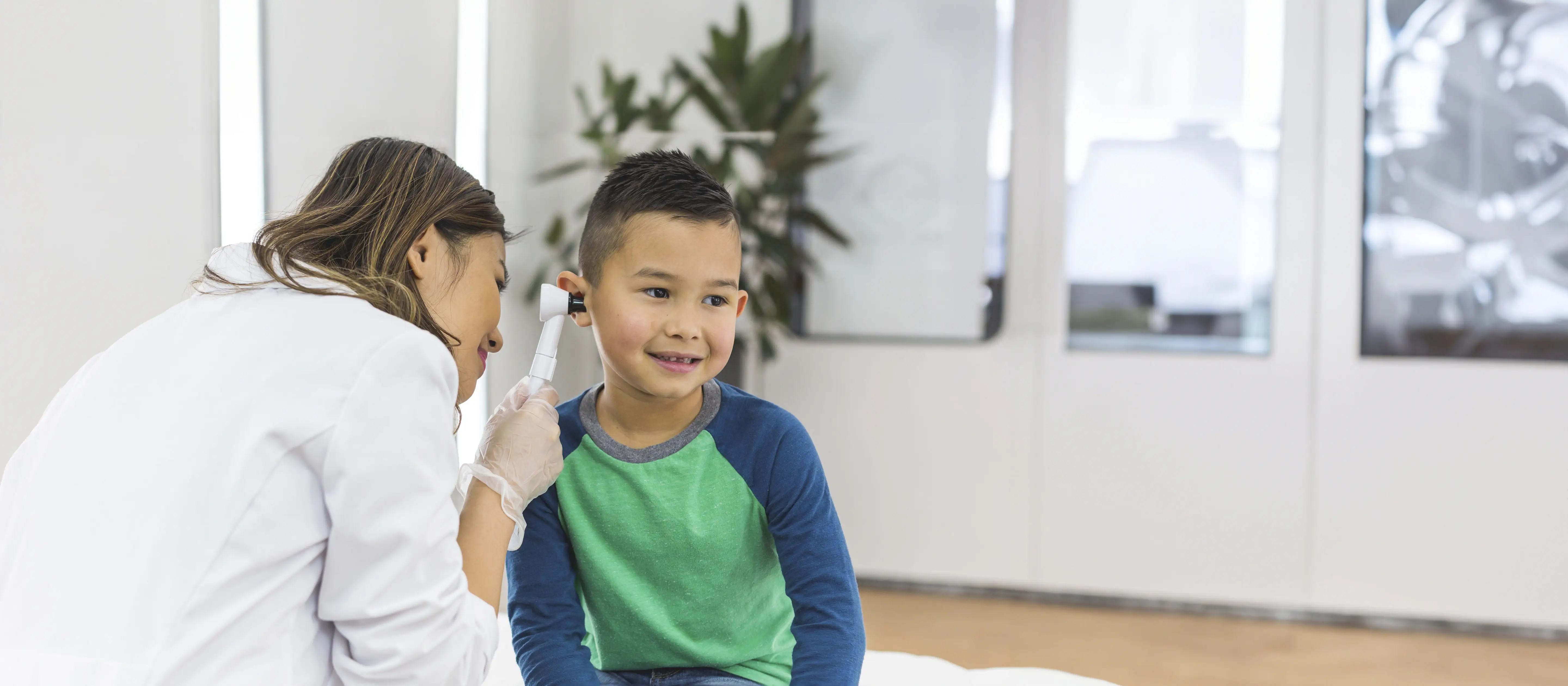We're growing! Find your way while visiting the ACH campus. Learn more >

Arkansas Children’s pediatric bone anchored implant program is dedicated to helping children with conductive hearing loss (CHL), mixed hearing loss (MHL), and unilateral hearing loss (UHL)/single sided deafness (SSD) hear better through direct bone conduction.
Causes of conductive hearing loss (CHL) or mixed hearing loss (MHL) can be present at birth or acquired later, and often include a malformed external ear, ear canal or middle ear. Many times, the ear canal has chronic infection and may result in chronic draining ears. The sound processor of the bone anchored implant can be coupled to a soft headband that uses elastic or other specially designed headbands to optimize sound and comfort. The Food and Drug Administration (FDA) recommends surgical intervention be performed at 5 years of age or older. Until a child reaches this age, Arkansas Children’s recommends the use of the bone anchored processor on one of the available headbands.
Children with normal hearing in one ear and hearing loss in the other ear are called unilateral hearing loss (UHL). When the poorer hearing ear has a complete loss of hearing it is sometimes referred to as single-sided deafness (SSD). Unilateral hearing loss or single-sided deafness in children often causes poor listening skills in areas of lots of noise, difficulty knowing where sounds are coming from (localization), and difficulty hearing from the side of the hearing loss even at close distances. Children with hearing loss in one ear and normal hearing in the other are at educational risk. These children may have normal speech and language skills but they sometimes perform poorly in their classes at school. At Arkansas Children's, we have found bone-anchored implants are beneficial to these types of hearing loss. The bone anchored implant routes sound from the ear with hearing loss to the normal hearing ear quickly through direct bone conduction and gives the sensation of hearing with two ears. At the age of 5, the sound processor can be attached to a small implant placed in the temporal bone behind the ear, transferring sound directly to the cochlea without involving the ear canal or the middle ear. The sound is transferred directly to the bone of the skull and in turn directly stimulates the organ of hearing, the cochlea. In many children this surgical intervention is performed in two outpatient surgeries, to ensure proper healing of the implant.